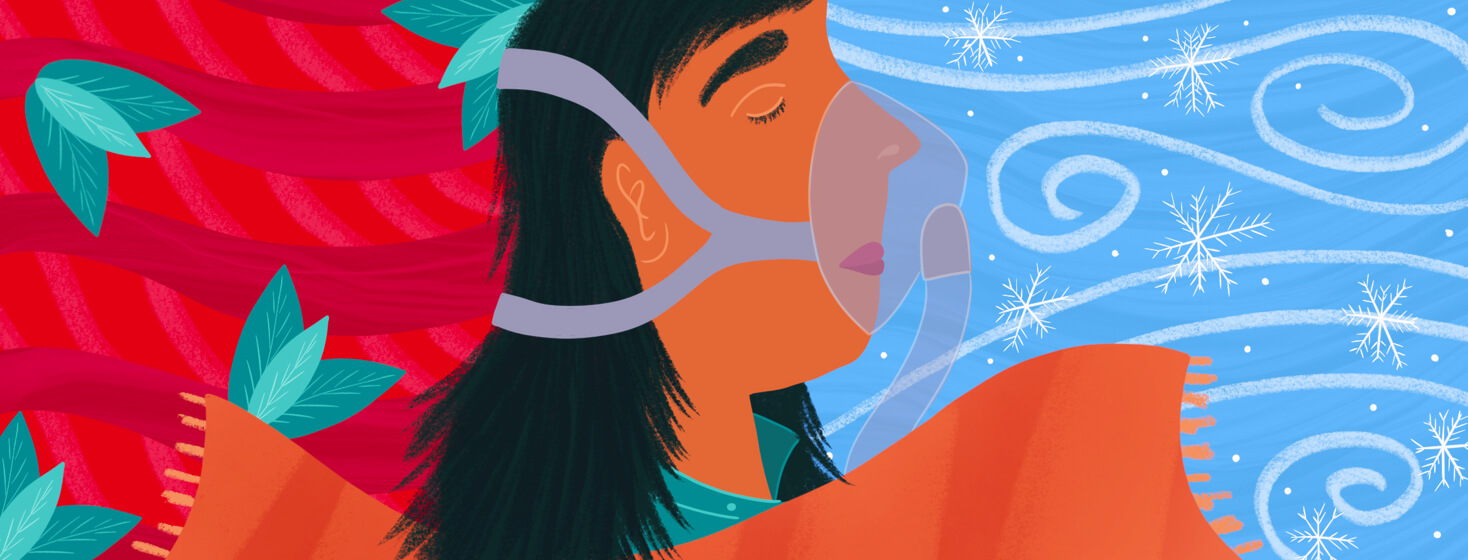Using Your CPAP in the Winter
Winter has arrived. The change in season can cause many problems for us CPAP users from dryness, water in the tube, and congestion.
I'll share how I get through the winter months.
CPAP tips for winter dryness
A common issue during the winter months is dryness. The likely reason behind this is turning the home heat on. No worries, it's a simple adjustment to your humidifier setting – I personally like to go up 1.
Depending on how long you sleep, you may find that your humidifier chamber runs out of water. This is very common in the winter months, especially with increasing the humidity level. I've even had some patients add a room humidifier.
Keeping water out of your tube
Keep in mind that if your bedroom is cold or if you sleep near a window, then you may find water in your tubing. This happens when you have heated humidity coming from the CPAP, and as soon as the heated humidity hits the cold air, it condenses. Having a heated tube or tube cover can help to prevent this. Or, an easier solution is to put your tube under the covers.
Dealing with dry lips
Something that I notice in the wintertime is that my lips become drier. I have found that if I put a thin layer of Chapstick or my personal favorite, Aquaphor (not to be used with oxygen due to it being petrolatum), before I put my mask on, my lips are nice and soft in the morning.
The challenge of staying humidified
I think this is one of the main reasons people don't use their CPAPs in the wintertime. I have a couple of suggestions. First, as I stated above, increase your humidity level. We do have a natural humidity level in our system.
However, using CPAP (continuous positive airway pressure) has a tendency to dry us out. Once we become dried out, we can become inflamed or worse, dry and cracking – which can lead to a nose bleed.
What helps me breathe when I'm congested?
I will take either peppermint or eucalyptus essential oil and/or Vicks vapor rub, put a drop or dab on a cotton ball, and then place that cotton ball on the outside of the machine next to the filter. You NEVER want to put anything in the humidifier chamber or in the machine.
By putting the cotton ball outside the machine, when the room air is pulled in by the motor, the smell of the oils or vapor rub can be smelled. Depending on how congested I am, I have placed a little dab of Vicks under my nose. I only do this because I wear a full face mask. I couldn't recommend it for a nasal or nasal pillows masks simply because your mask rests on the upper lip, where the vapor rub would go.
Happy sleeping with your CPAP this winter!
I hope my tips were helpful and that you will continue to get a good night's sleep by wearing your CPAP through the winter.
If you are struggling with your CPAP therapy, reach out to your doctor and homeware company. Don't give up; keep your heart healthy!

Join the conversation